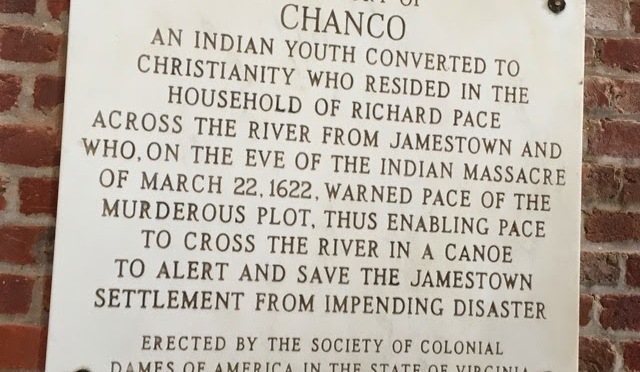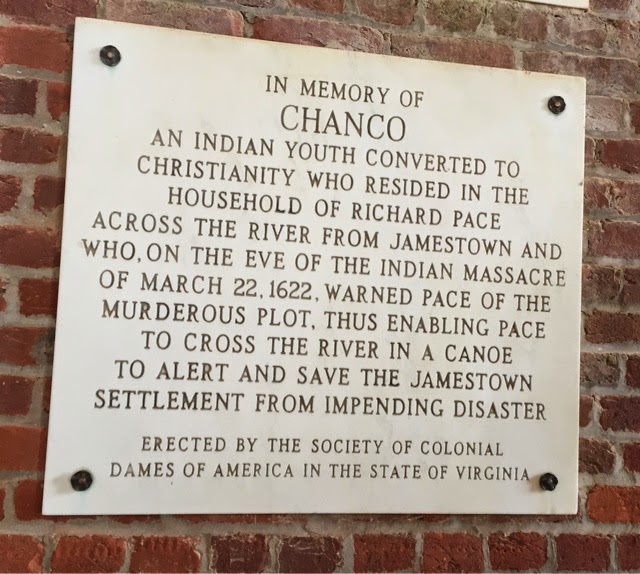
My 35th entry in Amy Johnson Crow’s “52 Ancestors in 52 Weeks family history blogging challenge.
The challenge: have one blog post each week devoted to a specific ancestor. It could be a story, a biography, a photograph, an outline of a research problem — anything that focuses on one ancestor.
I have fallen way behind in this challenge again due to continued health issues the last few months, but I am trying to catch up by the end of the year.
My 35th ancestor is my husband’s 11th great grandfather, Richard Pace (1583-1627), who is credited with saving the colonial settlement of Jamestown, Virginia. I discovered and started investigating this Richard Pace back in April 2012, when I first wrote about a new research lead. Since that first post, I have done more research, and have spoken with several cousins of Jeff who already knew this family connection and have researched it themselves.
Back during those initial investigations, I found out that there is a plaque dedicated to Richard Pace in the church on the National Park’s Jamestown settlement site.
Visiting Jamestown
Well, last month, Jeff and I finally got to visit the historic Jamestown, Virginia colonial settlement site as part of a 10 day Virginia and Washington, DC vacation with my parents. Early this year, my parents invited us to stay a week with them in their Shenandoah Valley timeshare. Jeff and I jumped at the offer for free lodging, scheduled a few extra days on the trip for all of us to visit DC, and started scouting out day trip options from the timeshare. We realized getting out to Jamestown would be quite the long drive (it turned into a 16-hour day!), but we also recognized that this might be our best chance at visiting Jamestown anytime in the near future. We just couldn’t pass up soaking in the history of that area, and we especially could not pass up getting to walk where Jeff’s ancestor walked, viewing the famous river he crossed to warn and save the town, and getting a first hand look at the dedicated plaque.
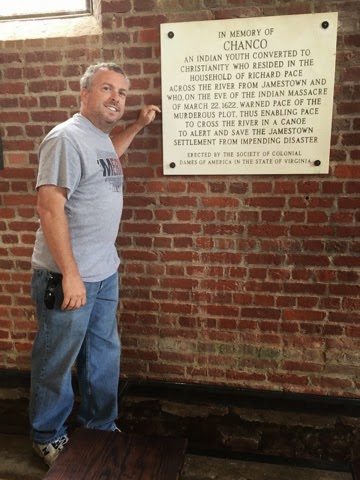
Richard Pace is credited with saving Jamestown from a 1622 Indian massacre. After learning from his Indian servant Chanco about the plot, Pace rowed across the James River to warn the settlement.
The plaque is primarily a tribute to Chanco, with Pace mentioned in a much less prominent placement and font size. I, of course, had to tease Jeff about this. Jealousy. My ancestors were peasants. We saw evidence of his prominent ancestors throughout the entire vacation.
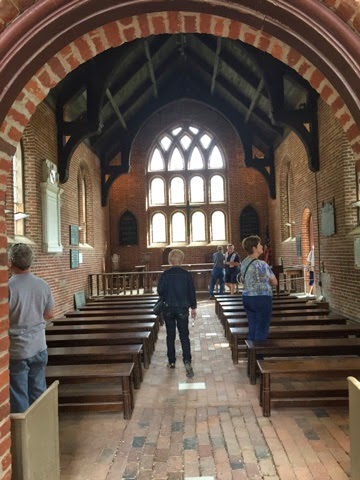
This is not the same church (constructed in 1617) that Jeff’s ancestors would have attended. However, this “newer” church (partially built in 1639) is on the site of that original church. So even though Richard Pace and his family never walked or worshiped in this building, it was still pretty cool to go inside one of the oldest European structures in the United States.
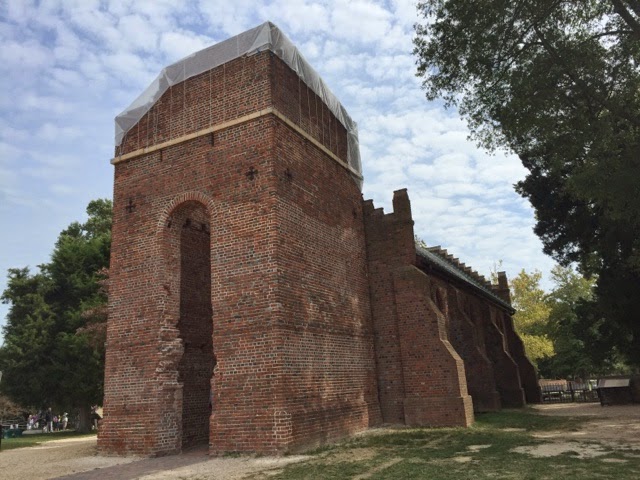
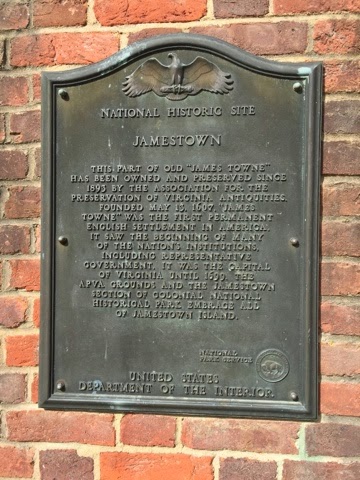
Jamestown was founded on 4 May 1607, and was the first permanent English settlement in the Americas. The Jamestown obelisk was built in 1907, as a tercentennial monument to the founding of Jamestown.

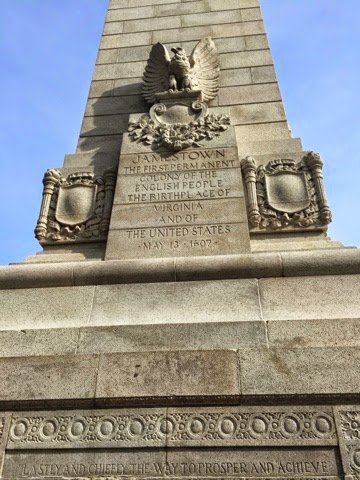
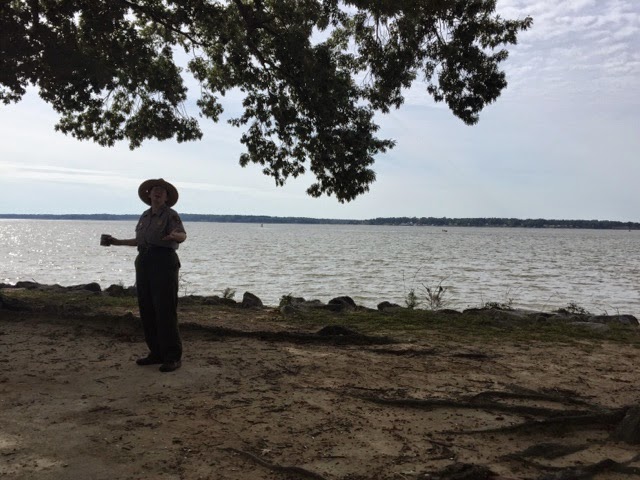
After the guided talk was done, Jeff and I had to take the opportunity to ask our ranger about Jeff’s ancestor. The ranger was thrilled to tell us that Richard Pace is one of her very favorite people from Jamestown history. But, it quickly became clear that she is an even bigger fan of Chanco, Pace’s Indian servant, and wants to write a book aobut Chanco when retired.
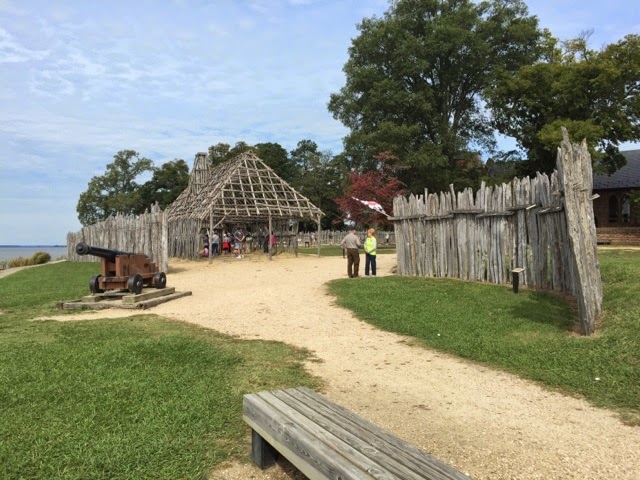
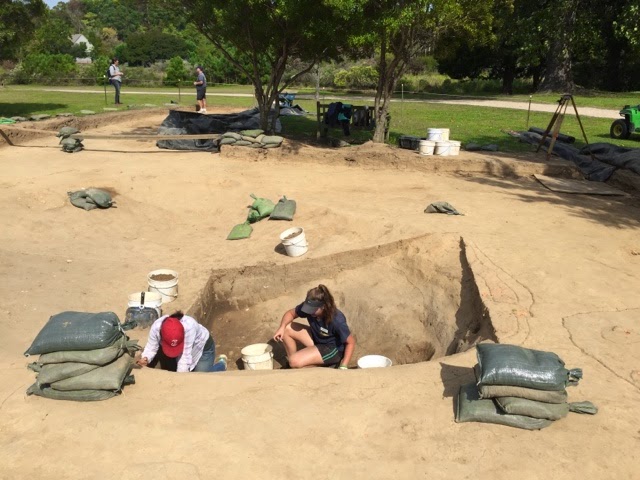
Pace’s Paines Plantation
Richard Pace, wife Isabella Smyth (1589-1637), and their son George Pace (1609-1655) immigrated from England sometime before 1618. Pace was not among the original settlers of Jamestown, but was among the earliest.
Pace and Smyth received one of the first land grants in the Colony of Virginia, as part of the headright system implemented in 1618, which granted lands to settlers who migrated from England and remained in the colony for at least three years. Recipients of these early land grants were referred to as Ancient Planters. Pace and Smyth — each granted 100 acres — registered a patent on 5 December 1620 for 200 acres located across the James River from the settlement, founding their “Pace’s Paines” plantation, now part of Mount Pleasant Plantation, a private non-profit-owned property (not open for public tours) in Spring Grove, Virginia.
Our family planned to drive by Mount Pleasant Plantation (and get a photograph with that sign, too) after a lunch stop at Cape Henry and Virginia Beach, but it was getting late, and there is no quick route to that area across the river. And we still had to hit Yorktown battlefield. So Jeff and I will have to visit the site of Pace’s Paines on another trip to the beautiful state of Virgnia.
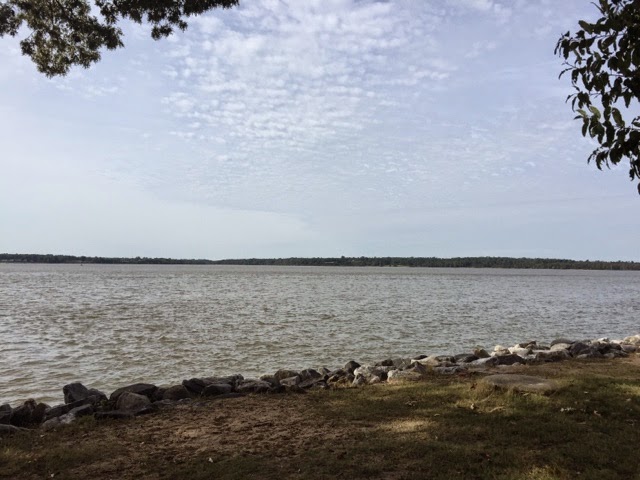
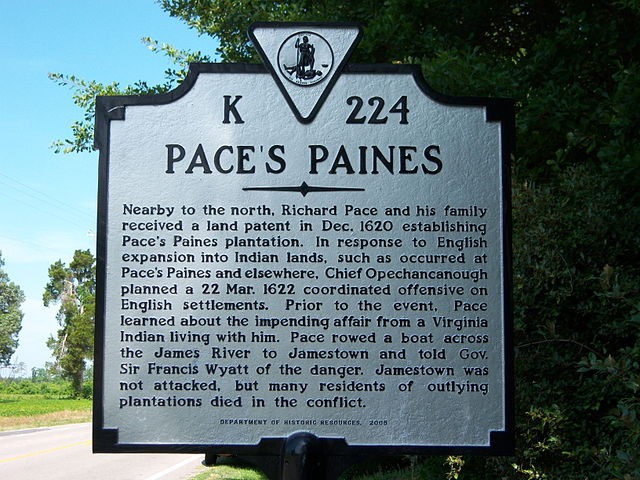
Historical Perspective
To put Pace’s Jamestown life and properties in historical perspective, he and Smyth arrived around the time that famous Pocahontas died (1617) while she and her husband John Rolfe and son were living in England. Rolfe died in 1622, two years after Pace and Smyth registered their land patent. Rolfe and Pocahontas, and later Rolfe and his second wife, also owned lands across the James River from the Jamestown settlement.
Richard Pace died in 1625.
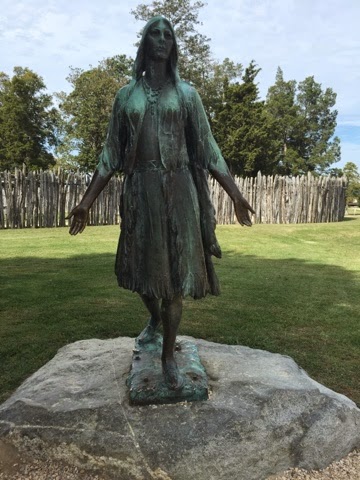
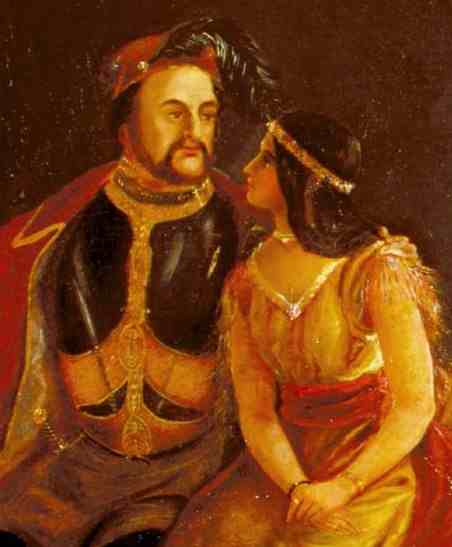
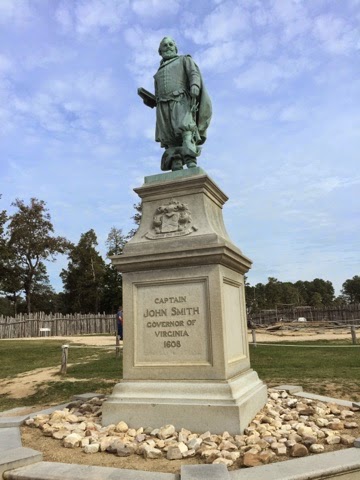
[contentblock id=12 img=html.png]
